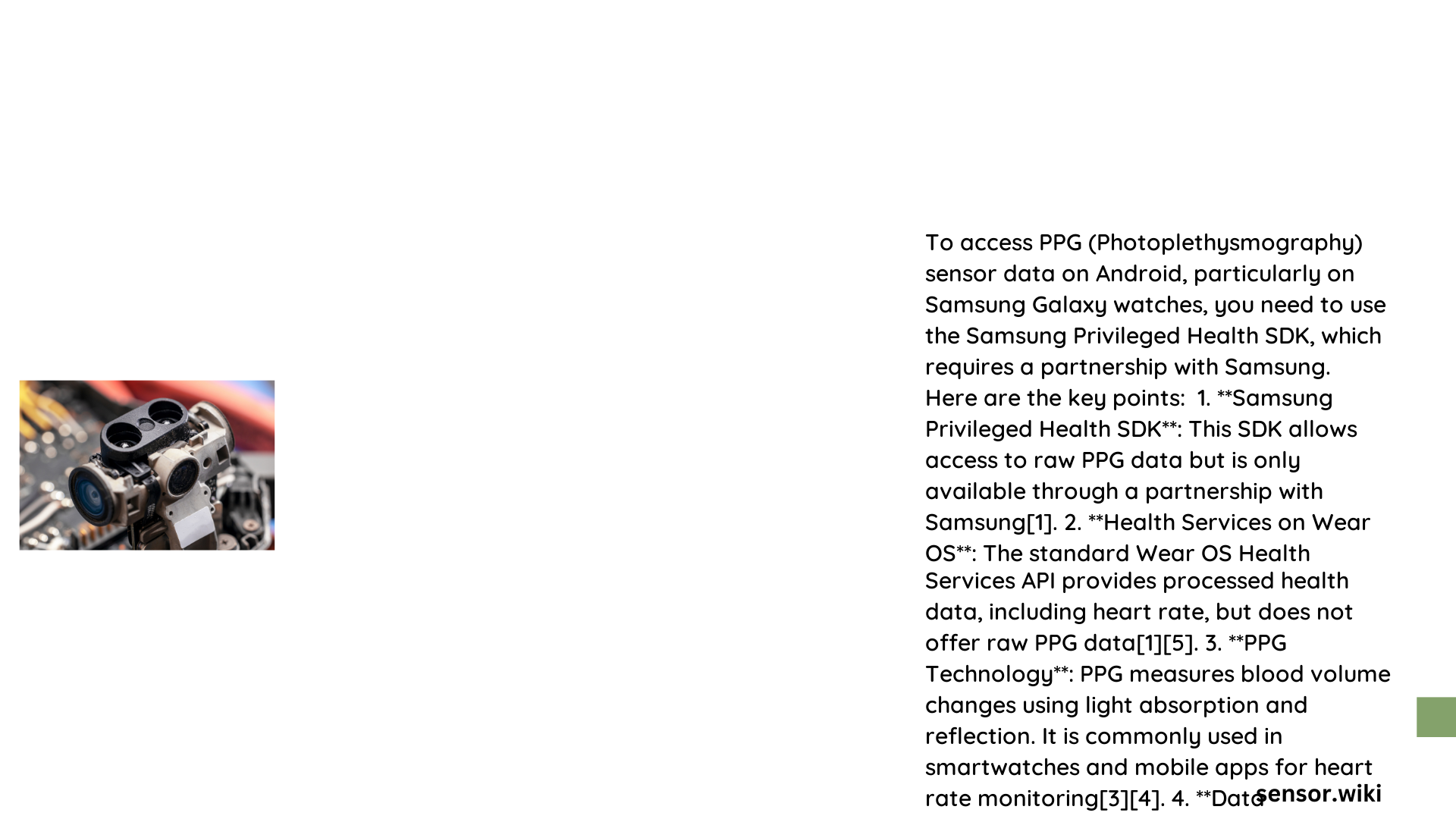Android PPG sensors represent a groundbreaking technological innovation in mobile health monitoring, enabling precise physiological measurements through light-based photoplethysmography techniques. These advanced sensors utilize specific wavelengths of light to detect blood volume changes, providing real-time cardiovascular and health insights directly from smartphones and wearable devices.
What Are Android PPG Sensors?
Android PPG (Photoplethysmography) sensors are sophisticated optical technologies integrated into mobile devices that measure blood flow and physiological parameters by analyzing light absorption and reflection through human skin. These sensors typically use green, red, or infrared wavelengths to capture intricate cardiovascular signals.
Key Technical Characteristics
| Sensor Attribute | Specification |
|---|---|
| Wavelength Range | 520-940 nm |
| Measurement Accuracy | ±2-5 bpm |
| Signal Processing | Advanced algorithmic filtering |
| Power Consumption | Low-energy |
How Do Android PPG Sensors Work?

Android PPG sensors operate through a sophisticated mechanism:
- Light Emission: Sensor emits specific light wavelengths
- Blood Absorption: Light penetrates skin tissue
- Signal Detection: Photodetector captures reflected/absorbed light
- Data Processing: Advanced algorithms interpret blood volume changes
Accuracy Factors
- Skin Tone Compatibility: Multi-wavelength technology
- Motion Artifact Reduction: Active Signal Characterization (ASC)
- Environmental Adaptability: Advanced noise cancellation algorithms
What Are Primary Applications?
Android PPG sensors enable multiple health monitoring capabilities:
- Continuous Heart Rate Tracking
- Sleep Pattern Analysis
- Stress Level Monitoring
- Exercise Performance Metrics
- Blood Oxygen Saturation Measurement
What Challenges Exist in PPG Sensor Implementation?
Developers and manufacturers face several implementation challenges:
- Hardware Compatibility Limitations
- Signal Noise Interference
- Cross-Device Performance Variations
- Computational Processing Requirements
Mitigation Strategies
- Use multi-wavelength sensor configurations
- Implement advanced signal processing algorithms
- Develop robust calibration techniques
- Create adaptive noise reduction mechanisms
Code Implementation Example
public class PPGSensorManager implements SensorEventListener {
private SensorManager sensorManager;
private Sensor heartRateSensor;
public void initializeSensor(Context context) {
sensorManager = (SensorManager) context.getSystemService(Context.SENSOR_SERVICE);
heartRateSensor = sensorManager.getDefaultSensor(Sensor.TYPE_HEART_RATE);
}
@Override
public void onSensorChanged(SensorEvent event) {
// Process PPG sensor data
float heartRate = event.values[0];
}
}
Future Development Perspectives
The Android PPG sensor technology continues evolving, with emerging trends including:
- Enhanced Machine Learning Integration
- Improved Multimodal Sensing
- Increased Computational Efficiency
- Broader Health Diagnostic Capabilities
Performance Benchmarks
| Generation | Accuracy | Response Time | Power Efficiency |
|---|---|---|---|
| Current | 90-95% | <50ms | Low |
| Projected | 97-99% | <20ms | Ultra-Low |
Conclusion
Android PPG sensors represent a transformative technology in mobile health monitoring, offering unprecedented insights into human physiological processes through sophisticated optical sensing mechanisms.
